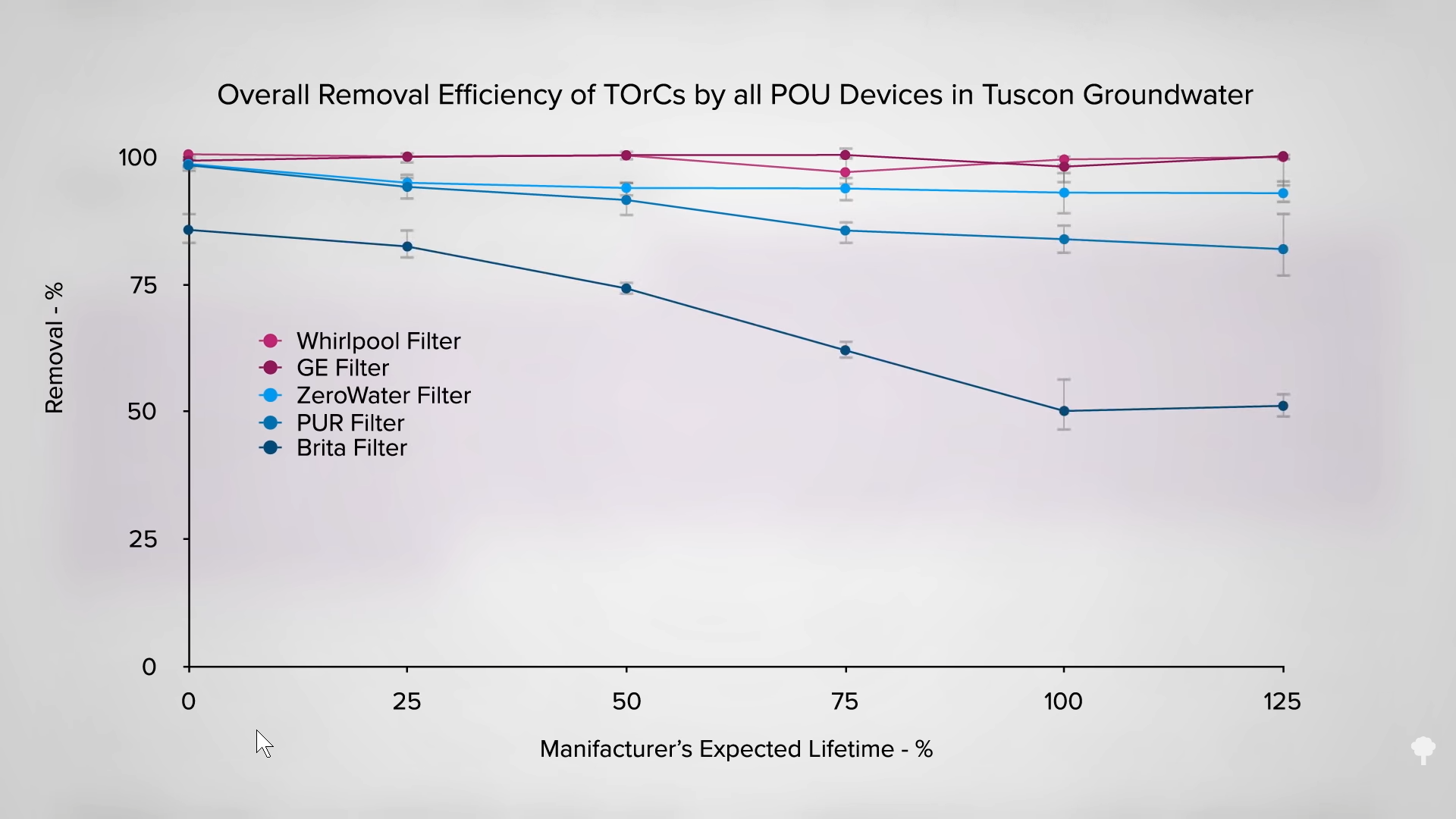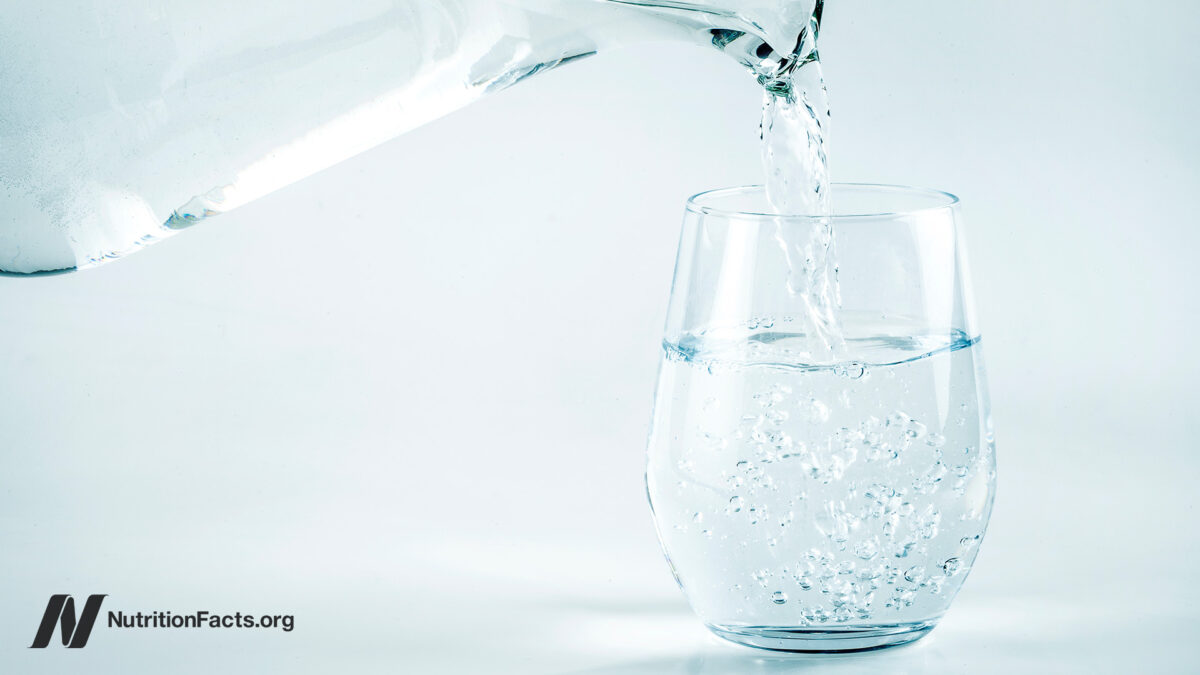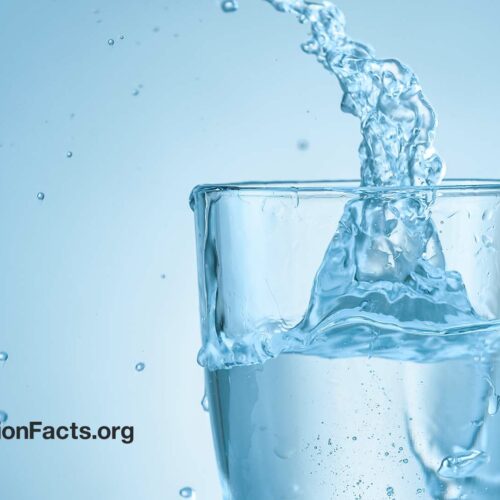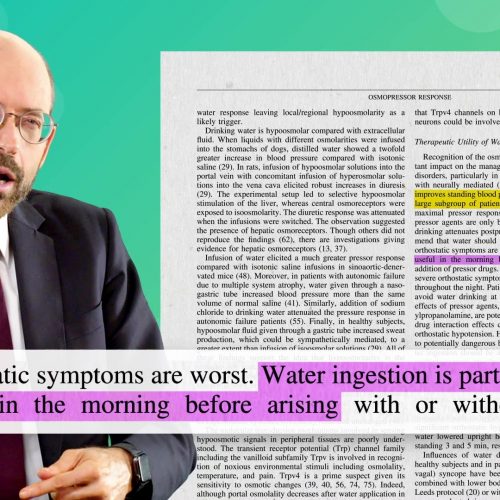There are disinfection byproducts in tap water. What happened when Brita, PUR, ZeroWater, and refrigerator water filters were put to the test?
Though many distrust the safety of tap water, a study of 35 brands of bottled water did not find them to be necessarily safer, cleaner, or of a higher quality than water straight out of the faucet. How much is that saying, though? Two studies published in the 1970s “changed forever the earlier perspective that drinking water safety was only about waterborne disease.” In fact, it was our fight against microbial contaminants that led to a new kind of contamination—in the form of disinfection byproducts.
The two landmark papers in 1974 solved the mystery of the source of chloroform in drinking water: We met the enemy, and he is us. The chlorination of drinking water—“disinfection [that] is crucial for maintaining the microbiological safety of water”—was interacting with natural organic matter from the water’s source and creating chlorinated compounds that can not only result in off-flavors and smells but also pose a potential public health risk. More than 600 disinfection byproducts have been identified so far.
After decades of research into the matter, it appears that the life-long ingestion of chlorinated drinking water results in “clear excess risk” for bladder cancer. There is also some evidence of increased risk of certain types of birth defects, but most of the concern has focused on the bladder cancer link. Forty years of exposure may increase your odds of bladder cancer by 27 percent. The Environmental Protection Agency estimated that 2 to 17 percent of bladder cancer cases in the United States are due to these disinfection byproducts in drinking water. However, this assumes the link is one of cause and effect, which has yet to be firmly established.
The best way to reduce risk is to treat the cause. Countries could prevent the formation of disinfection byproducts in the first place through the better initial removal of source water’s “natural organic matter” (what my grandmother would have called schmutz). Some countries in Europe, such as Switzerland, the Netherlands, Austria, and Germany, have newer, well-maintained drinking water systems that can distribute tap water free from residual disinfectants, but the cost to upgrade the infrastructure of even a small city in the United States could run in the tens of millions of dollars. As the tragedy in Flint, Michigan, revealed, we seem to have trouble keeping even frank toxins out of the tap.
Nearly 40 percent of Americans use some sort of water purification device. I look at the comparisons of these devices in my video Is It Best to Drink Tap, Filtered, or Bottled Water?. Tap water from Tucson, Arizona, was pitted head-to-head against two of the most common purification approaches—pour-through pitchers and refrigerator filters. As you can see in the graph below and at 2:53 in my video, both fridge filters (GE and Whirlpool) did similarly well, removing more than 96 percent of trace organic contaminants, and edging out the three pitcher filters. ZeroWater caught 93 percent, and PUR pitchers got 84 percent. By the time the filters needed to be replaced, Brita was only catching 50 percent. A similar discrepancy was found between filters from PUR and Brita tested specifically against disinfection byproducts. They both started out about the same at the beginning, but by the end of the filter’s life, PUR appeared to do better, as you can see below and at 3:15 in my video. Reverse osmosis systems can work even better, but the cost, water waste, and loss of trace minerals don’t seem worth it.


As you can see below and at 3:40 in my video, the annual cost for purifying your water with a pitcher or fridge filter was calculated to be about the same, at only around a penny per cup—with the exception of the ZeroWater brand, which is up to four times more expensive.

I always figured the “change by” dates on filters were just company scams to get you to buy more replacements, but I was wrong. Because I drink filtered water mostly just for taste, I used to wait until the water started tasting funky. Bad idea. Not only do the filters eventually lose some of their removal capacity, but bacterial growth can build up inside them, resulting in your “filtered” water having higher bacterial counts than water straight out of the tap. You’d be actually making your water dirtier rather than cleaner, so it is important to replace filters regularly.
As an aside, I used to think the same about the advice to change your toothbrush every three months. Which Big Brush executive thought that one up? But, no, I was wrong again. Toothbrushes can build up biofilms of tooth decay bacteria or become breeding grounds for bacteria to flume into the air with each toilet flush before going back into our mouths. Fun fact: A single flush can spew up “millions of bacteria into the atmosphere” that can settle on your nice, moist toothbrush. The good news is that rather than buying new brushes, you can disinfect the head of your toothbrush with as little as a ten-minute soak in white vinegar or, even more frugally, vinegar diluted by half with water.
Hydration is important. See related videos below for more information.
Avoiding waterborne pollutants if possible is also important. See my videos Lead in Drinking Water and Friday Favorites: Benefits of Turmeric for Arsenic Exposure.
How Many Glasses of Water Should We Drink a Day? Watch the video to find out.



